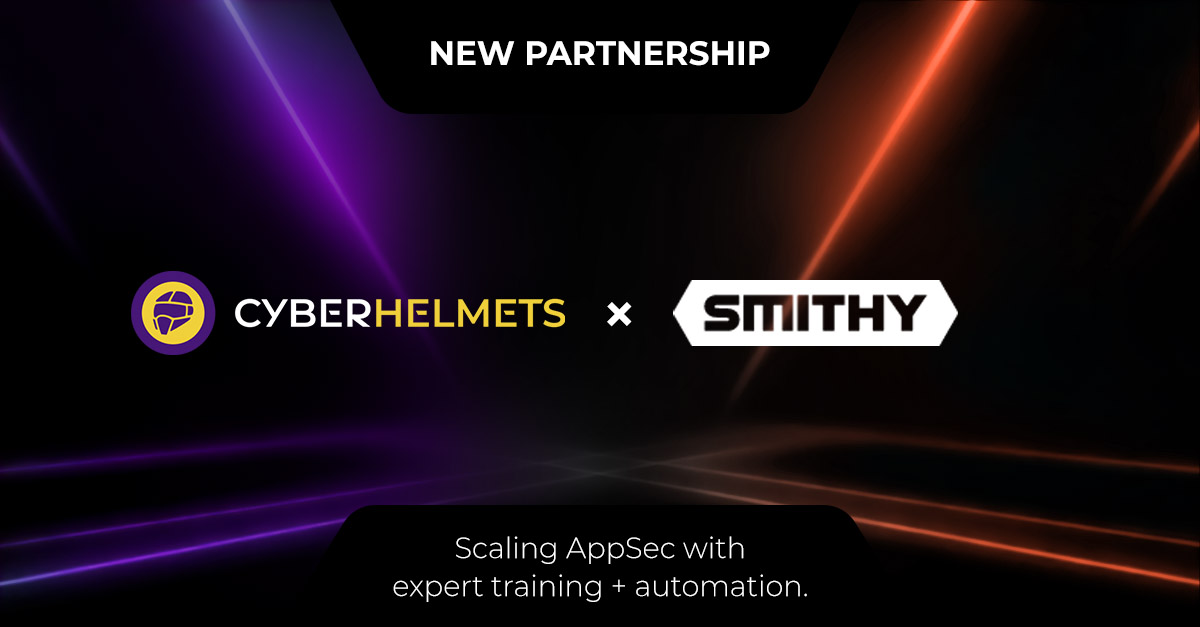Training builds knowledge. Automation turns knowledge into practice. Together, Cyber Helmets and Smithy Security are partnering to give enterprises both: expert-led instruction that equips teams, and automation that ensures those skills translate into repeatable, operational outcomes.
This joint approach closes the gap between learning and doing, so engineering and security teams don’t just attend sessions, they gain capabilities they can apply immediately in their environments.
What this partnership delivers
Cyber Helmets and Smithy Security combine strengths to accelerate enterprise AppSec outcomes. Together, they help teams gain the skills they need and turn those skills into repeatable, measurable practices.
- Joint AppSec training programs
- Role-based mastery: Developers, SREs, and AppSec teams receive hands-on instruction tailored to their responsibilities.
- Practical labs: Training is reinforced with realistic exercises orchestrated through Smithy, giving teams experience in controlled, production-like scenarios.
- Flexible delivery: Virtual classrooms, in-person workshops, and on-demand modules let enterprises scale learning without disrupting workflow.
- Product-service bundles for Enterprise outcomes
Our tiered packages combine Cyber Helmets’ expert-led training with Smithy Security’s automation to deliver clear, measurable outcomes: faster remediation, secure SDLC adoption, and audit-ready evidence.- Essentials: Introductory training in secure coding and AppSec fundamentals, with platform access for hands-on exercises.
- Professional: Advanced orchestration tooling, guided playbooks, and interactive labs to operationalize secure workflows across teams.
- Enterprise: Full-scale enablement including custom training pathways, continuous coaching, joint account management, and comprehensive reporting on adoption and compliance.
Where this partnership adds value: Targeted to your security priorities.
Enterprises face a gap between learning security best practices and applying them consistently. This partnership ensures teams gain capability and see tangible results.
- Faster secure development: Role-based training plus hands-on exercises help teams remediate vulnerabilities more quickly.
- Operational consistency: Smithy’s automation reinforces learned practices, making workflows repeatable and measurable across projects.
- Team alignment: Developers, SREs, and AppSec professionals practice together, ensuring skills translate into coordinated action.
Availability and next steps
The Cyber Helmets + Smithy Security partnership is ready to help enterprises accelerate AppSec outcomes today. Programs are available virtually, in-person, or on-demand, and can be tailored to your team’s tech stack, maturity, and compliance needs.
From our leadership
Aris Zikopoulos, Managing Director at Cyber Helmets said:
“Enterprises don’t just need more training. They need training that translates into repeatable, automated practice. Together with Smithy Security, we’re closing the gap between learning and doing”
Spyros Gasteratos, Founder/CEO at Smithy Security, said:
“Automation accelerates secure delivery when teams have the right skills. Partnering with Cyber Helmets ensures customers build capability while operationalizing it on day one.”
Whether you want to boost secure coding adoption, streamline workflow enforcement, or demonstrate compliance, this partnership makes it possible.
Request a live demo to see the training + automation in action or schedule a scoping call to explore a tailored program for your team.












